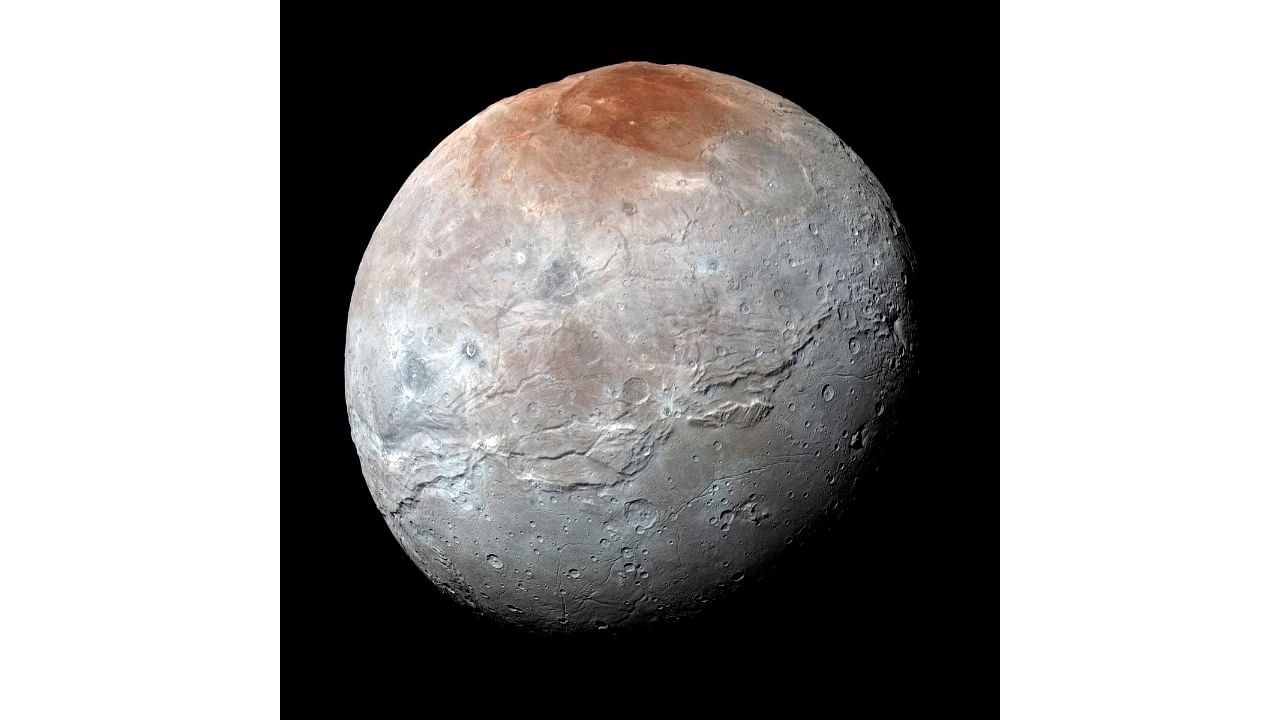
Pluto's largest moon Charon is seen in this photo.
Credit: Reuters Photo
New Delhi: Scientists have detected the gases carbon dioxide and hydrogen peroxide on Pluto's largest moon, 'Charon', which they said could help understand how icy bodies originated and evolved in the outer Solar System.
Once considered the ninth and last planet of the Solar System, Pluto was demoted to a 'dwarf planet' status in 2006, when members of the International Astronomical Union voted to scientifically define a 'planet' for the first time.
According to the resolution passed then, a dwarf planet is one that has not been able to create a clear orbit for itself, free from debris. Pluto's orbit, lying in the Kuiper belt region beyond the planet Neptune, was thought to cross with those of other objects.
Charon is the largest of the five known moons of Pluto and has been studied since it was discovered in 1978. Being extremely cold, there's practically no chance for life to exist on Pluto and water, essential for life, is present as ice.
The team, led by researchers at the Southwest Research Institute, US, said that while ice, ammonia and organic compounds -- formed from carbon and hydrogen -- have been detected on Charon, this is the first time carbon dioxide and hydrogen peroxide have been detected. They cited limitations in wavelengths of light emitted by instruments used for studying Pluto's biggest moon.
When ice is broken down by being bombarded with charged particles like electrons or ions, hydrogen and oxygen atoms are released, which then combine to form hydrogen peroxide -- a highly reactive compound, commonly used in bleaches and disinfectants.
The extended wavelength range of NASA's James Webb Telescope allowed the team to study the light scattered from Charon's surface at wavelengths longer than was previously possible, they said. The study is published in the journal Nature Communications.
The researchers said that carbon dioxide is present mainly as a coating on an ice-rich surface.
"Our preferred interpretation is that the upper layer of carbon dioxide originates from the interior and has been exposed to the surface through cratering events. Carbon dioxide is known to be present in regions of the protoplanetary disk from which the Pluto system formed," lead author Silvia Protopapa, from the Southwest Research Institute, said.
The presence of hydrogen peroxide indicated that the ice-rich surface is changed by UV light from the Sun, along with particles in solar winds and cosmic rays, the researchers said.